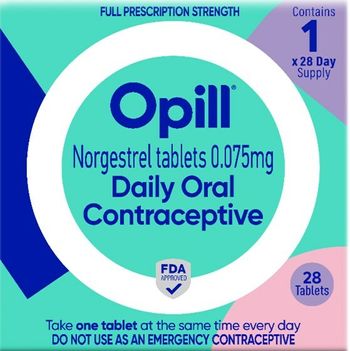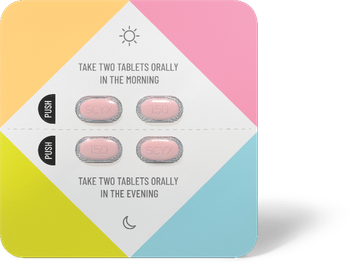
Myth and mgmt. in Amer. hospitals: You can't just spend your way to quality
Excellence in management, not unbridled spending, reduces medical error rates at Solucient&s 100 Top Hospitals. Find out what happens when hospitals develop sound business sense.
Myth and management in American hospitals
You can't just spend your way to quality
Excellence in management, not unbridled spending, reduces medical error rates at Solucient's 100 Top Hospitals. Find out what happens when hospitals develop sound business sense.
By Richard Service, Editor
The Institute of Medicine shattered some comfortable suppositions about the quality of U.S. health care with its 1999 study, To Err Is Human, which estimated that as many as 98,000 Americans die every year because of medical errors in hospitals. A new study from the health care information firm Solucient is about to crack another myth: That managing a hospital like a business will somehow impinge on quality of care.
The research reveals that the best-managed hospitals (defined as those on the Solucient 100 Top Hospitals list) have far better patient safety records for often preventable surgical complications than do other hospitals and significantly lower costs as well. Further, when bad things happen in good hospitals, patients fare far better in terms of mortality and quicker return to home. That, too, lowers costs.
Solucient gave Business & Health an exclusive advance look at the soon-to-be released study, titled Variations in potentially preventable complications: Best-managed hospitals vs. peers. It analyzed over 900,000 Medicare surgical patients across all U.S. hospitals to identify complications that are often preventable and to measure the impact of those complications on patients and the economy. Its conclusions fly in the face of some cherished beliefs. (See
"Historically, hospital executives have claimed that most standard business practices just couldn't be applied to their industry," says Jean Chenoweth, senior vice president of Solucient, headquartered in Evanston, Ill. "In the past they've been slow to adopt concepts like product line management and continuous performance improvement. Now they are skeptical about engineering rapid change through Six Sigma and other current business methods that require use of comparative data in decision-making."
Many have argued, she adds, that only clinical measures should be used to assess hospital performance, preferably those that are disease- or procedure-specific: lowest postoperative hemorrhage rate for coronary bypass surgery, for example.
In the business world, this would translate into measuring an automaker's performance solely on the basis of the tire blowout rate of its SUV division. Hospital patients and road warriors are both at risk for injury or death. Indeed, more people die from hospital errors than from car accidents. Yet a narrow view of one procedure or one piece of equipment says nothing about the performance of an entire organization or the likelihood that most of its products are of good quality.
Much of the health care industry, led by the American Hospital Association, questioned the accuracy of the Institute of Medicine report and claimed that it was greatly exaggerated. They were particularly incensed by one of the studies that the IOM used, which found that 3.7 percent of inpatients experienced injuries caused by medical management. That may sound small, but consider that 58 percent of these events were attributed to errors and 28 percent to negligence.
While many of the errors identified by the IOM are not detectable in administrative data, a significant subset of preventable complications can be measured and evaluated at the hospital level, according to a recent validation study by Harvard researchers. These included the three groups of frequently preventable complications examined by the Solucient study:
- Postoperative complications of the respiratory system, except pneumonia;
- Complications of vascular and hemodialysis devices;
- Other surgical complications, such as iatrogenic hypotension and fragments of cataract left in the eye post-surgically.
Patients fare better at the best-managed hospitals
The research showed that all three kinds of complications occurred far less frequently in hospitals that have demonstrated their business management skills. Moreover, when potentially avoidable complications occurred, the 100 Top award winners deal with the situation in ways that result in lower mortality and shorter stays than at other hospitals.
Respiratory complications, except pneumonia:Post-op complications in this category are very serious. The 89,000 patients who suffered these complications were five times more likely to die in the hospital than the 874,000 patients who did not (14.1 percent vs. 2.5 percent). Those who survived were 61 percent more likely to need significant levels of post-hospitalization medical care.
The study found that patients in hospitals that had been named to the 100 Top list as many as three times were 8 percent less likely to have post-op respiratory complications than those in peer hospitals. The gap was statistically significant, and it widened considerably among hospitals that had won the award four times or more. Their patients were a whopping 21 percent less likely to have these complications.
Complications of vascular and hemodialysis devices: Nearly 910,000 patients were studied for this group. Once again, those who suffered one of these complications (over 35,000 people) were five times more likely to die in the hospital than the 874,000 who did not (12.7 percent vs. 2.5 percent). Patients at the 100 Top were 8 percent less likely to suffer complications of vascular and hemodialysis devices than those in peer hospitals.
Other surgical complications: The pattern continued across 950,000 surgical patients for the final set of complications. The 76,000 patients that suffered miscellaneous surgical complications were twice as likely to die in the hospital as the 874,000 patients who did not (4.9 percent vs. 2.5 percent). Further, patients who had the complication were 44 percent more likely to need significant levels of post-hospitalization medical care (57.5 percent vs. 70.4 percent). Patients at the 100 Top were 14 percent less likely than patients at peer hospitals to experience these complications.
At an average of an additional $20,000 per patient, these three groups of frequently avoidable complications represent a huge cost to hospitals and, therefore, to employers. Add to this the indirect cost of lost productivity if a worker's hospital stay and recovery period are extended and it becomes essential to identify well-managed institutions that use time-tested business techniques to assure better patient safety. "Perhaps it is even more important," says Chenoweth, "for employers to encourage and assist hospitals and managed care organizations to adopt accepted business practices for error measurement and reduction."
Learning from the best of breed
While the difference in clinical results at hospitals that have been recognized for excellence in management is quite clear, it is important to note that Solucient's new study does not explain how these "best-managed hospitals" achieve their success. Nevertheless, some distinct characteristics have emerged in the eight years that Solucient has been conducting its 100 Top Hospitals research. (See
The 100 Top Hospitals, for instance, have a 14 percent higher Medicare case mix index than other hospitals, meaning their patients are sicker when admitted than those of other hospitals. They also have fewer FTE's per adjusted discharge, show greater use of special or intensive care units and pay their staff an average of $2,800 more per FTE.
Last year, the profitability of almost every hospital decreased in the United States. Among the Solucient 100 Top Hospsitals, profitability dropped by 17 percent to a median total profit margin of nearly 9 percent. On the other hand, the nonwinner's profitability was cut in half to a near break-even margin of less than 2 percent.
Additional research has been performed over the years by academics, consulting firms like William M. Mercer and Solucient itself to learn more about the differences between the Solucient 100 Top Hospitals and those that have not won the award. Among the most notable factors:
The 100 Top Hospitals tend to adapt early and quickly to new technology and practices. Award winners like Aultman Hospital in Canton, Ohio, have made early use of robotics in the pharmacy, significantly reducing errors in dispensing drugs. Expanding robot use to laboratories has further reduced errors.
Health care systems often facilitate the spread of best practices and high performance through use of technology. Sisters of Providence, Oregon Division, led by five time winner Providence St. Vincent Medical Center and three other 100 Top winners, invested in uniform information systems more than a decade ago to facilitate cost control and quality improvement. More than 15 years ago, Intermountain Health Care was investing in a uniform electronic medical record system across all of its hospitals to reduce drug errors and help standardize care. Six Intermountain Health Care Hospitals have won the 100 Top Hospitals award since 1993.
The 100 Top Hospitals are early adopters of new treatment protocols and techniques.In treating breast cancer, for instance, the 100 Top are more likely than others to combine total mastectomy with reconstructive surgery, thereby avoiding a second hospitalization or outpatient procedure for the patient and cutting overall costs significantly. A Solucient study released last January also found that the 100 Top are much more likely to perform breast-conserving surgery--recommended for eligible patients by the National Institutes of Health 10 year ago--and provide follow-up radiation therapy than their peers.
For coronary angioplasty (PTCA), the 100 Top are more likely than their peers to spend more on patient treatment and cut costs elsewhere, according to an August 2000 Solucient study. Winners of the award tended to use more stents and were more likely to order more of the newest and most expensive anti-clotting drugs. Still, they had lower costs per case. Moreover patients undergoing PTCA at one of the 100 Top were 4 percent less likely to need a second procedure in the following year than those treated at hospitals that had never won the award.
Finally, a 1999 Solucient study of 200,000 cases found that the 100 Top are also more selective in the use of antibiotics in clean surgical cases. They tend to use lower-generation, lower-cost antibiotics pre-surgically than peer hospitals without causing higher post-surgical infection rates. The award winners tend to use only a single dose of one pre-op antibiotic. Other hospitals tend to use more than one pre-op antibiotic.
The 100 Top Hospitals put business practices to work. A 1995 study by William Mercer found that managers at the 100 Top tend to be better than average communicators with laser focus on quality improvement and cost reduction.
Many top hospitals give service lines the latitude to function as their own business units. Some attribute success to formation of partnerships within their communities. One award winner, for example, teamed up with the American Heart Association to improve stroke outcomes through public education campaigns for rapid symptom recognition and speedy time to treatment.
Brigham and Women's Hospital in Boston, the only eight-year winner of the 100 Top designation, encourages physician leadership and has routinely sent at least a dozen physicians to the Harvard Business School over the last eight years. The physician MBAs have helped Brigham and Women's improve results in nontraditional areas and integrate the often separate clinical and administrative enterprises, according to Brigham CEO Jeff Otten.
Chenoweth says many of the 100 Top report considerably more interest from local employers, and several have landed new business contracts worth more than $1 million. Fortune 500 companies have often asked Solucient for comparisons of their networks to the Solucient 100 Top. In Florida, a major insurer includes selection for the award in its criteria for network selection.
The Rochester [New York] Health Commission, which has brought together employers, consumers, insurers and providers to address means to improve health care in the region, has selected the Solucient 100 Top Hospitals benchmarks as a common, off-the-shelf means of comparing local provider performance against similar hospitals nationwide. The Commission has worked with the insurers to use the Health Plan Employer Data and Information Set in a similar fashion for the Rochester region.
Clearly, they understand a concept that is being validated in continued research and crucial to employers and insurers across the country: Superior management delivers value in hospitals, just as it does in any other business.
Variations in potentially preventable complications: Best-managed hospitals vs. peers, analyzed over 900,000 Medicare surgical patients. The study sample for each complication consisted of all patients who experienced that complication plus a 20 percent random sample of surgical controls, who had no complications.
The Solucient research team performed bivariate analyses examining the relationship of various factors with the complication outcomes and tested for statistical significance. To adjust for multiple risk factors simultaneously, logistic regression models were created, using each complication as the outcome. Each model was adjusted for the year, 1998 or 1999, when the hospitalization occurred as well as for the following patient and hospital characteristics:
- Patient age, sex and race;
- Source of admission (clinic, transfer from another hospital, etc.);
- Admitting diagnosis is a complication of care;
- Presence of 13 chronic diseases that often affect the risk of complications;
- Hospital bed size, teaching status, geographic region and urban vs. rural;
- Hospital 100 Top winner status (never won; won one-three times; won four or more times).
The Solucient 100 Top Hospitals Awards were launched in 1993 (The company was then called HCIA.) as a research initiative to identify hospitals that would thrive in a new and adverse economic environment and then create a benchmark database to compare hospital performance from a "balanced scorecard" approach.
The program has always been an empirical evaluation, based on quantitative data that are consistent and complete across the United States. Its primary source is the Medicare cost report, filed annually by every hospital that participates in Medicare. Hospitals can't pay to enter or sign up to win. The program relies strictly on statistical rather than anecdotal evidence to define top performance.
The Medicare Case Mix Index is an adjustment factor that ensures hospitals treating sicker patients are not undervalued by performance measures. The Index averaged 1.47 for benchmark hospitals and 1.27 for peers for the past five years, meaning the cases treated at the 100 Top were about 14 percent more complex.
The measurements cover quality of care, efficiency of operation and sustainability of overall performance. Many are self-explanatory. All use 1999 data.
Risk-adjusted mortality and complications indices, which use some 1998 data as well, compare deaths and complications to what might be reasonably expected at a given institution. Cash flow margin is among the purest measures of profitability. It is the sum of net income, depreciation and interest expense divided by the sum of net patient revenue and total other income. Total asset turnover ratio measures productivity in terms of the ability to create sustainable capital. Net patient revenues are divided by total assets.
The complete report, which compares winners in five groups ranging from small community hospitals with 25 to 99 beds to major teaching hospitals with 400 or more beds, is available at
Jean Chenoweth. Myth and mgmt. in Amer. hospitals: You can't just spend your way to quality. Business and Health 2001;4:28.
Newsletter
Get the latest industry news, event updates, and more from Managed healthcare Executive.






















































